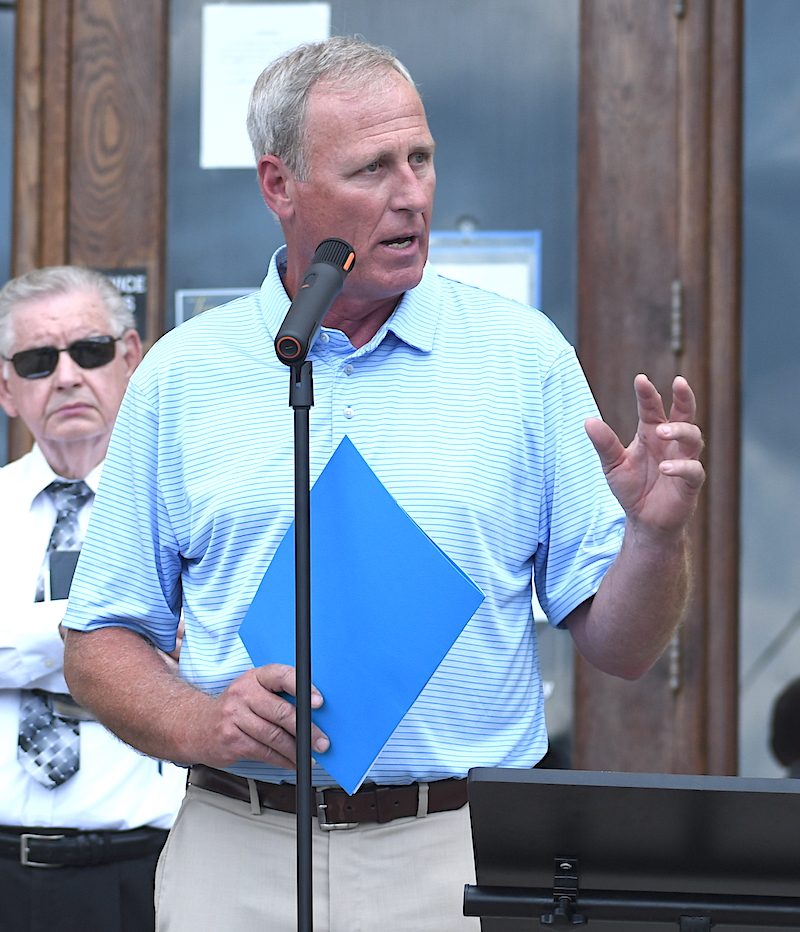TN infrastructure gets ‘C’ on latest report card
Published 4:55 pm Wednesday, November 16, 2022

- An aerial view of Cumberland Gap, Tennessee
|
Getting your Trinity Audio player ready...
|
The Tennessee Section of the American Society of Civil Engineers (ASCE) released the 2022 Report Card for Tennessee’s Infrastructure. The Report Card includes 13 categories of infrastructure receiving an overall grade of ‘C’ – the same grade given by the section in its 2016 report. That means Tennessee’s infrastructure is in mediocre condition and requires attention but is a step ahead of the national average of ‘C’ earned in the 2021 Report Card for America’s Infrastructure.
Tennessee’s freight network is strong and plays a major role in the national economy as a key mobility hub and its energy grid has been reliable, allowing families and businesses to operate efficiently. Many of the state’s systems are performing at or above national averages; however, a surge in population growth, increasingly severe weather impacts and insufficient data on the current condition of several infrastructure sectors threaten the long-term viability of the state’s overall network. Civil engineers graded aviation (C+), bridges (B), dams (D+), drinking water (C+), energy (C+), inland waterways (C), parks (C+), rail (C), roads (C), solid waste (C+), storm water (C+), transit (D+), and wastewater (C-).
“As one of the most prominent mobility hubs in all of America, infrastructure is the backbone to all we do here in Memphis, and everything we can accomplish throughout the great state of Tennessee,” said Memphis Mayor Jim Strickland. “Our airports, roads and bridges keep our economy flowing, drawing more jobs and businesses in the future. The ASCE report is a critical tool for tracking our progress, in addition to highlighting where we could use some work. With more people flocking to Tennessee than ever before, this is an exciting time and our infrastructure networks must be ready to help us capitalize on the opportunity.”
Trending
Monica Sartain, chair of the 2022 Report Card for Tennessee’s Infrastructure, says the results show that Tennessee’s infrastructure is a driving force behind the economic strength in the state and the state’s significant role in the national supply chain.
“We cannot begin taking these systems for granted if we want to sustain our current successes with population growth adding strain to the existing system,” said Sartain.
Aviation (C+), Bridges (B) and Roads (C)
Only 4.2 percent of Tennessee’s bridges are rated in poor condition, a decrease from 6 percent in 2010 and one of the best rates of any state in the country, far below the national average of 7.3 percent. This is thanks to extensive investments in rebuilding or rehabilitating existing bridges and prioritizing those with the greatest need. However, the number of bridges going from good to fair has increased as well, from 44 percent of bridges being in fair condition and 50 percent in good condition in 2013 to 53 percent fair and 43 percent good in 2021. This must be addressed to prevent more bridges from reaching poor condition.
Airports (C+) were one of the few categories to see a grade drop in Tennessee. Major commercial airports saw massive growth over the last decade. Memphis International Airport remains the biggest freight operation in the United States with FedEx’s world hub operation, and passengers at Nashville International Airport doubled between 2010 and 2019. However, caps on the fuel tax and limitations on passenger facilities charges present problems in the future. Since lawmakers passed the fuel tax cap, funding for state aviation projects has been cut by more than half. Tennessee airports face a $3 billion funding gap from 2019-2023. If the gap were closed, the associated projects would create more than 65,000 jobs.
Tennessee roads (C) are generally in good or fair condition, with only .04 percent of interstate highways in poor condition. The Bipartisan Infrastructure Law will provide $6.86 billion in funding for Tennessee roads over the next five years, which could increase the state’s GDP by $1.42 billion each year. Traffic continues to be an issue in the region, costing the region’s economy $1.2 billion per year according to 2018 data. With the influx of residents, the state will need to find ways to alleviate bottlenecks as current projections expect an increase in congestion.
Trending
Drinking Water (C+) and Storm water (C+)
Tennessee uses nearly one billion gallons of water a day through surface water, groundwater and private water systems. The EPA estimates $8.7 billion in funding is needed to maintain and improve Tennessee’s drinking water (C+) infrastructure over the next 20 years. Water loss from aging, leaking water pipes continues to be an issue. The 212 drinking water systems in Tennessee average water loss of 33 percent, with 43 of those systems losing 40 percent of drinking water.
Tennessee’s rapid growth has led to increasing storm water (C+) concerns, as growth in heavily populated parts of the state means more hard surfaces on the ground, which leads pollutants into waterways. Of the waterways that have been tested at least 56 percent have pollutants, yet only 46 percent of the total waterway systems have been tested. Twenty-two cities in Tennessee have implemented storm water utility fees, which help maintain storm water systems and manage flooding.
Energy (C+)
In 1933, Congress established the Tennessee Valley Authority (TVA) to foster economic development, control flooding, and promote the integration of its natural resources. Almost 90 years later, TVA operates the nation’s largest public power system: generating and transmitting power to a population of nearly 10 million people and 700,000 businesses including Tennessee, Alabama, Mississippi, Kentucky, Georgia, North Carolina, and Virginia. TVA has operated with 99.9 percent reliability over the past twenty years while utilizing ASCE standards. Local power companies (LPC) take electricity from TVA and distribute to residents. Much greater public data from LPCs are necessary for decision-makers to understand Tennessee’s energy infrastructure needs.
The report also includes calls to action to raise the grades, including the increase of the availability and acquisition of data used for design, planning, and other decision-making processes. Tennessee collects a lot of data on transportation-related areas of infrastructure. However, data on other infrastructure networks is limited. Although improvement in this area has been seen specifically in the areas of water and wastewater, there is still limited to no data on locally or privately owned infrastructure components including storm water, dams, and parks.
Fully fund infrastructure projects, as needed, to eliminate deferred maintenance. This way, agencies are better able to address aging systems in the future. Although strides have been made across the state to eliminate work backlog and reduce local matches for some projects, there are still areas with large amounts of deferred maintenance.
Include considerations for population growth and extreme weather events when planning and funding future projects. Tennessee has seen heavy increases in both population and the regularity of extreme weather events in the past few years. For our infrastructure to keep up with these changes, special attention must be paid to these trends when planning and funding for future projects.






